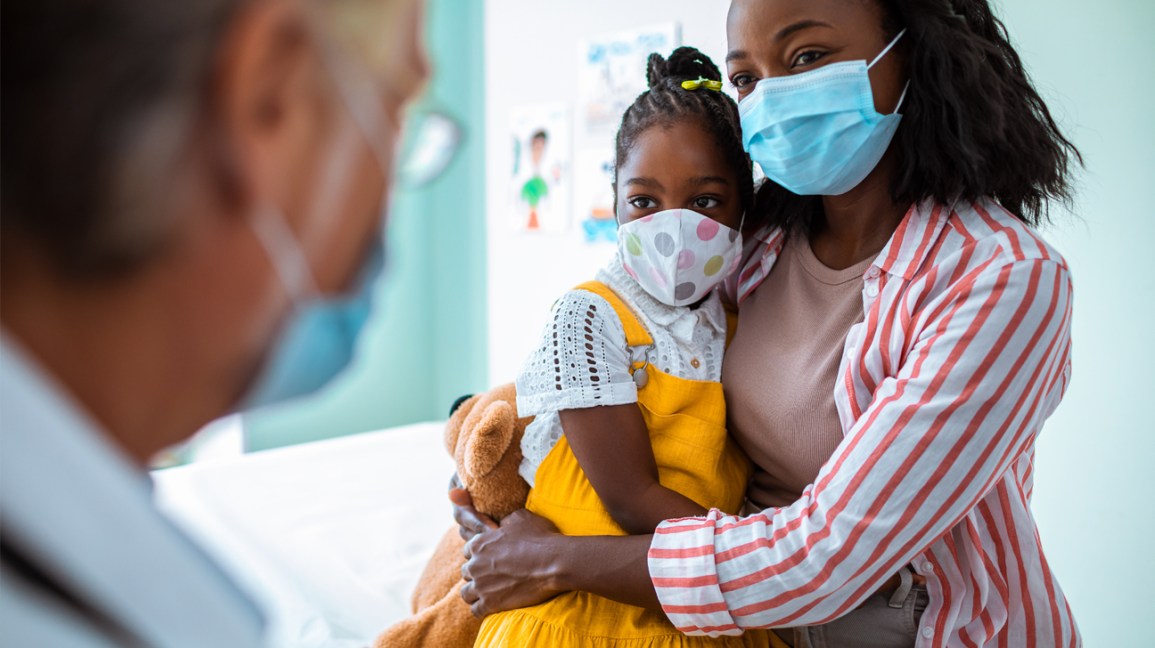After COVID-19, Kids Can Develop MIS-C: Here Are the Signs
 Share on Pinterest
Share on Pinterest- Among children who get COVID-19, a small proportion develop multisystem inflammation syndrome (MIS-C).
- This serious complication can appear weeks after the initial infection.
- MIS-C causes widespread inflammation that can affect multiple tissues and organs.
While COVID-19 tends to be less severe in children than in adults, some kids do become seriously ill with the disease or related complications.
Among young people who contract the coronavirus, a small proportion develop multisystem inflammation syndrome in children (MIS-C). This serious complication can appear weeks after the initial infection.
“MIS-C is a postinfectious inflammatory condition, where your body’s immune system kind of goes into overdrive,” said Dr. Christina Johns, MEd, FAAP, a pediatric emergency physician and the senior medical adviser for PM Pediatrics in Lake Success, New York.
“The ripple effect of that means that there can be lots of inflammatory processes going on in many different organs,” she said.
In a study published last week in JAMA Network Open, researchers looked at 1 million cases of people under age 21 who contracted the coronavirus and later developed MIS-C.
“While it is rare complication — and the numbers from this new study certainly support that — it is not one without consequence. It is not a small deal to get MIS-C,” Johns said.
The new study was conducted by researchers from Boston Children’s Hospital and the Centers for Disease Control and Prevention (CDC).
The researchers analyzed MIS-C surveillance data from seven jurisdictions: Connecticut, Georgia, Massachusetts, Michigan, New Jersey, New York (excluding New York City), and Pennsylvania.
They found that among people under age 20 in those jurisdictions, 248 cases of MIS-C were reported from April to June 2020.
Among children who developed COVID-19, Black, Latino or Hispanic, and Asian or Pacific Islander children were more likely than white children to develop MIS-C.
“We previously knew that MIS-C cases seem to be higher in Black Americans or Latino Americans, but we also knew that those groups have a higher risk of COVID,” said Dr. Lorry Rubin, director of pediatric infectious diseases at Cohen Children’s Medical Center of Northwell Health in New Hyde Park, New York.
“Now this study shows that certain racial groups are at higher risk, independent of their risk for getting COVID,” he said.
MIS-C causes widespread inflammation that can affect multiple tissues and organs.
“It triggers inflammation that affects a lot of the systems in the body: the heart, the gastrointestinal tract, the skin, the eye, and so forth,” Rubin said.
One of the most common symptoms is a fever that lasts for at least 3 to 4 days.
Other potential symptoms include:
- skin rash
- bloodshot eyes
- red or swollen lips
- abdominal pain
- diarrhea
- vomiting
The specific symptoms can vary from one child to another.
Several cases of the syndrome have also been reported in adults (MIS-A).
If you think your child might have MIS-C, the CDC advises you to contact their doctor, nurse, or clinic right away.
“What really concerns me about MIS-C is just how quickly children can go from seemingly completely OK, to not feeling well, to being highly critically ill,” Johns told Healthline.
“If parents have some significant concerns that something just isn’t quite right, trust that instinct,” she said.
Healthcare professionals treat MIS-C with supportive care, such as:
- intravenous fluids
- medications to reduce inflammation
- treatments to improve heart function and breathing
“Inflammation involving the heart is perhaps the most serious feature, and many children come to medical attention with the severe impairment of heart function known as cardiogenic shock,” said Michael Grosso, MD, medical director and chair of pediatrics at Northwell Health’s Huntington Hospital in Long Island, New York.
“In such cases, children will require admission to a pediatric intensive care unit and life support,” he continued.
MIS-C is only one of several complications that children and adolescents can potentially develop from COVID-19.
“I want to sort of debunk the argument that if you’re in a pediatric age group, COVID’s no big deal,” Rubin said. “It is still a source of a lot of infection, morbidity, and even death in the pediatric age group.”
The only known way to prevent MIS-C and other COVID-19-related complications is to avoid contracting the coronavirus.
“That is best done by doing all the things we did throughout the pandemic: social distancing, hand hygiene, and masks,” Grosso said.
“Most important is getting immunized, at least for pediatric patients greater than 12 years of age,” he said.
The CDC currently recommends that everyone ages 12 and up get vaccinated against COVID-19.
Scientists are still studying COVID-19 vaccines in younger children. As more findings from those studies come out, Grosso expects that a vaccine will be granted emergency use authorization for younger kids “in the near future.”


